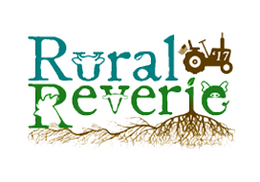The first time buyer might spend some time doing a little head scratching the first time they purchase a whole or half animal for the family or grouped community of friends. The experience can be confusing for someone deciding to go down this path. There are typically three ways that commodities such as ours, whole and half meats, are sold direct to customers. These below numbers are based off our Moderated Angus Cattle.
Hoof Weight. Purchase the product or a portion of the product and then pay for processing separately. Realistically, your looking at about $3,200 for a decent, yet questionable, Craigslist steer. Now that the animal is purchased, the seller usually drops the animal off at the processor and you pay the fee. Well, shocker… Packaging, processing, and logistics are not cheap. Currently we pay $1.45/lb hanging weight, plus about $345 in fees. Fees: Process, Harvest, Disposal, Bones, 1# Ground, Labels, Weights... it adds up. That comes up to around $1,150. You pick up the beef and take it home. Issues? Sorry. In the end the total price was roughly $4,350 for a whole beef and hopefully 375 pounds of quality meat.
Hanging Weight. The second way and most common; the buyer pays for “hanging weight”. Most novice buyers aren’t aware until they’ve done this once, but hanging weight is not finished weight. Hopefully, the seller is filling the buyer in on this very important information up front. To get from live “hoof weight” the processor turns the steer into something very similar to what Rocky Balboa beats up on in Rocky.  This is the carcass or “hanging” slab of meat. Typically, this first processing renders the animal down to about 60% of its original weight. Using our Grain-Fed Moderated Angus, 925 pounds of hoof weight is down to 555 pounds of hanging weight. Current prices we found are ranging anywhere from $5.75 to $7.00 a pound for hanging weight purchases. On the cheap end that's about $3,200, sound familiar? The buyer then pays for processing... same as above $1,150. Same end result... roughly $4,350 for a whole beef and hopefully 375 pounds of quality meat.
This is the carcass or “hanging” slab of meat. Typically, this first processing renders the animal down to about 60% of its original weight. Using our Grain-Fed Moderated Angus, 925 pounds of hoof weight is down to 555 pounds of hanging weight. Current prices we found are ranging anywhere from $5.75 to $7.00 a pound for hanging weight purchases. On the cheap end that's about $3,200, sound familiar? The buyer then pays for processing... same as above $1,150. Same end result... roughly $4,350 for a whole beef and hopefully 375 pounds of quality meat.

Finished Weight. The third way and the way we do it; is by “finished weight”. The buyer pays directly for what they get. Transparent and upfront! We, Rural Reverie, pay for a USDA certified processor to Cryovac seal your meat in flexible denominations. We will personally walk you through filling out a cut-sheet and answer any and all questions. There are extra charges for some customizations (sausages, smokes, jerky). Now, picking up where we left off of above, we have a 555 pound hanging weight “Rocky” slab... Adrian! It is then processed even further, butchered if you desire, into what is generally eaten by the consumer (roast, ground, steak, etc.). Once again, typically this will then leave the buyer with 2/3rds of the hanging weigh, about 375 pounds of finished meat. Our price is currently $11.00/lb finished... that's 375 pounds verified beef, quality checked by Rural Reverie after it leaves processor, for $4,125. If the weight is less... you'll pay less, if more, then you'll... pay more. It's relative.
Wrapping it all up, pun intended. We believe that none of these are any more wrong or right when it comes to “business”. But we don’t just want your business, we want you to enjoy the experience. We, Rural Reverie, simply believe in making it as easy and straightforward for the buyer as possible. It’s easier to sell $3.50 hoof, or $5.75 a pound hanging, versus $11.00 a pound finished. In the end the buyer is paying for the same finished meat. It’s simply marketing tactics, control, and risk.
Risk? Control? Yes! We have processed about 150 of our steers since 2017, our hanging weights are relatively consistent. The issue is loss during butchering. The difference in finished weight of ground round and round roasts... massive! Think about it... bone weight, meat left on the bone, trimming, et cetera. This can add up to hundreds of dollars. That's why you take over at hanging, you have control, you're to blame... no risk to beef seller. Have you seen finished meat elsewhere... do you get to choose cuts? Likely not.
Disclaimer: This article assumes that all cattle weighs 925 pounds for math ease. Obviously, some weigh more some weigh less. Also, not all farm and husbandry practices are the same nor are all processors. We ask you to make no assumptions, do homework and Come and See!


Leave a comment